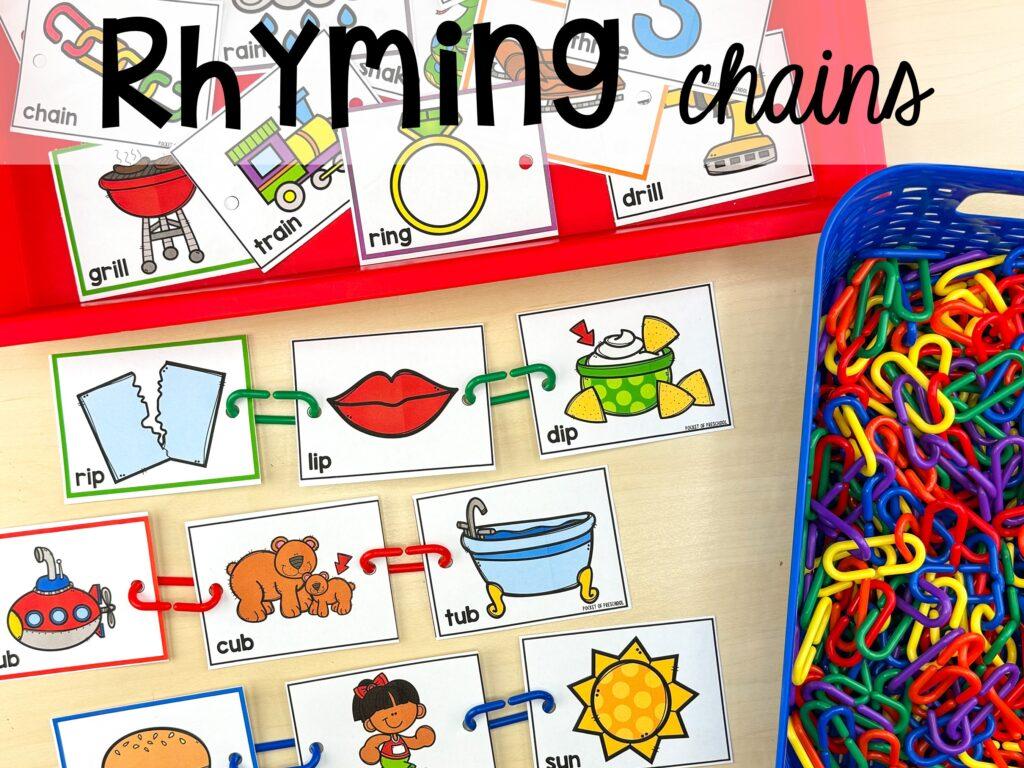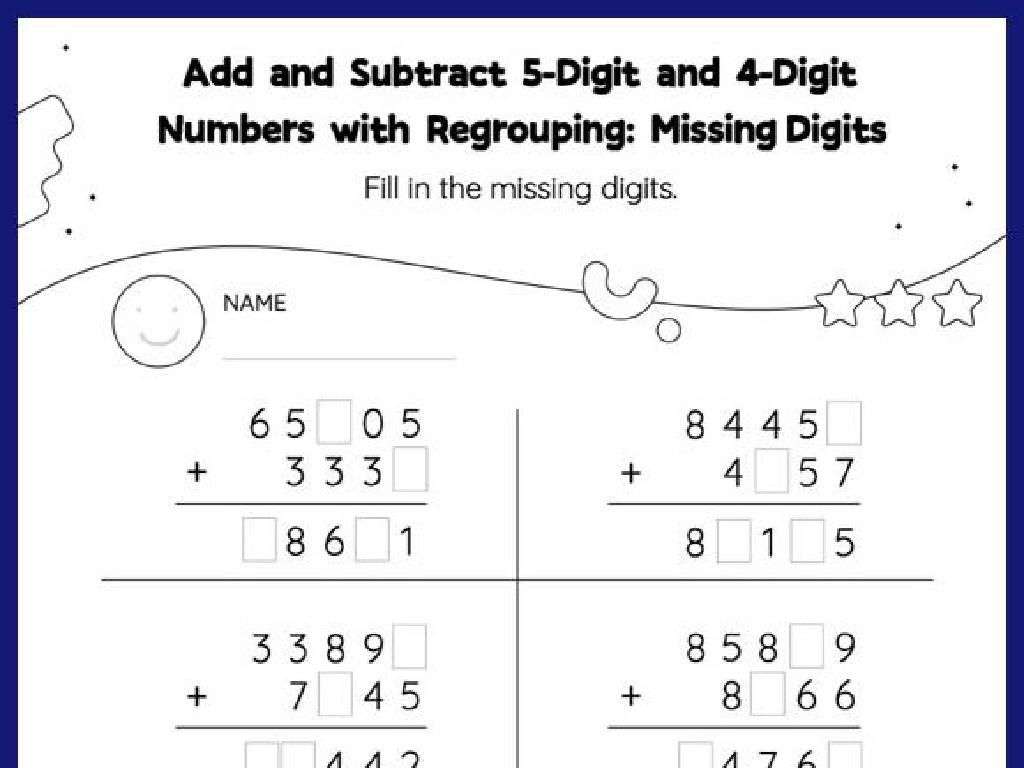The Bill Of Rights
Subject: Social studies
Grade: Fifth grade
Topic: Government
Please LOG IN to download the presentation. Access is available to registered users only.
View More Content
Exploring The Bill of Rights
– What is The Bill of Rights?
– The first 10 amendments of the US Constitution protecting freedoms
– The role of Government
– Importance of Rights
– Rights ensure freedom and equality for everyone
– Rights for all citizens
– Every citizen is entitled to these rights, regardless of background
|
This slide introduces the Bill of Rights as a crucial part of the United States Constitution that outlines the freedoms and legal protections for all citizens. It’s important to explain that the government’s role is to uphold these rights. Discuss why having rights is essential for fairness and freedom in society, and emphasize that these rights apply to every American citizen. Use examples like freedom of speech and the right to a fair trial to illustrate these points. Encourage students to think about how these rights impact their daily lives and the lives of those around them.
Understanding the Bill of Rights
– The Bill of Rights: First 10 Amendments
– The initial amendments to the Constitution, including freedoms like speech and religion
– Designed to protect citizens from government
– They ensure the government cannot infringe on personal freedoms and legal protections
– A cornerstone of American liberty
– The Bill of Rights is essential for American democracy, safeguarding individual liberties
– Reflects fundamental rights and freedoms
|
The Bill of Rights consists of the first ten amendments to the United States Constitution and serves as a critical document in American history and law. It outlines the specific freedoms that are guaranteed to all citizens and provides a promise of protection against any abuse of power by the government. These amendments include fundamental rights such as freedom of speech, religion, and the press, as well as protections like the right to a fair trial and the prohibition of unreasonable searches and seizures. When discussing the Bill of Rights with fifth graders, it’s important to provide clear examples of each right and how it applies to their daily lives, fostering an understanding of the freedoms they enjoy and the importance of these protections in a democratic society.
The First Amendment: Our Freedoms
– Freedom of Religion and Speech
– You can follow any religion or express your opinions freely.
– Freedom of Press and Assembly
– Media can report news without fear, and people can gather peacefully.
– Right to Petition the Government
– If you want changes, you can ask the government directly.
– Significance of Free Speech in Democracy
– Free speech lets everyone share ideas, which is important for a fair government.
|
The First Amendment is a cornerstone of American democracy, granting citizens the right to express their beliefs and ideas without government interference. It’s crucial for students to understand each aspect: religion, speech, press, assembly, and petition. Provide examples like choosing what to wear as a form of expression or discussing a book in a club as assembly. Explain how these freedoms contribute to a healthy, functioning democracy by allowing open discussion and criticism, which leads to progress and protects individual rights. Encourage students to think of times they’ve exercised these rights in their own lives.
Understanding Amendments 2 to 5
– Second Amendment: Right to Bear Arms
– This amendment allows people to own and carry weapons.
– Third Amendment: No Quartering of Soldiers
– Soldiers cannot stay in a person’s home without consent.
– Fourth Amendment: Protects from Unreasonable Searches
– The government can’t search or take your property without a good reason.
– Fifth Amendment: Rights in Criminal Cases
– Guarantees fair treatment through due process and protects against self-incrimination and being tried twice for the same crime.
|
This slide covers Amendments 2 to 5 of the Bill of Rights, which are crucial for protecting individual freedoms. The Second Amendment ensures citizens can own firearms, while the Third Amendment prevents the military from forcing citizens to house soldiers. The Fourth Amendment safeguards against arbitrary searches and seizures, ensuring privacy and security in personal property. The Fifth Amendment provides several protections in criminal cases, including due process, which means the state must respect all legal rights owed to a person, and it also prevents individuals from being compelled to testify against themselves (self-incrimination), as well as protecting them from being tried twice for the same offense (double jeopardy). Discuss each amendment with examples to help students understand their rights and the historical context in which these amendments were created.
Understanding Amendments 6-10
– Sixth Amendment: Fair trial rights
– Guarantees a speedy, public trial and a lawyer if you can’t afford one
– Seventh Amendment: Civil case rights
– Allows for jury trials in civil cases involving more than $20
– Eighth Amendment: No cruel punishment
– Protects against excessive bail or fines, and cruel or unusual punishment
– Ninth Amendment: People’s unlisted rights
– Recognizes that people have rights not spelled out in the Constitution
– Tenth Amendment: States’ powers
– Says any powers not given to the federal government belong to the states or to the people
|
This slide covers the last five amendments of the Bill of Rights, which are crucial for protecting various aspects of justice and governance. The Sixth Amendment ensures that in criminal prosecutions, the accused has the right to a speedy and public trial, among other protections. The Seventh Amendment extends the right to a jury trial to federal civil cases, and the Eighth Amendment prohibits the federal government from imposing excessive bail, excessive fines, or cruel and unusual punishments. The Ninth Amendment acknowledges that the people have additional rights outside those listed in the Constitution. Lastly, the Tenth Amendment reinforces the principle of federalism by stating that powers not delegated to the United States by the Constitution, nor prohibited by it to the States, are reserved to the States or to the people. Encourage students to think about how these amendments impact their daily lives and the importance of these rights in a democratic society.
The Importance of the Bill of Rights
– Safeguards personal freedom
– It ensures our personal choices are respected.
– Restricts government power
– It prevents the government from having too much control.
– Guarantees a just society
– It makes sure laws are fair and protect everyone.
|
This slide aims to help students understand why the Bill of Rights is a crucial element of American democracy. It protects individual freedoms such as speech, religion, and the press, ensuring that citizens can express themselves without fear. By limiting the power of the government, it prevents any single entity from becoming too powerful and abusing its authority. Lastly, it is the foundation for a fair and just society where laws are applied equally to all citizens, protecting against discrimination and ensuring that everyone’s rights are respected. Encourage students to think of examples where these rights play a role in their daily lives and discuss the importance of each right.
The Bill of Rights in Our Daily Lives
– Real-life scenarios and the Bill of Rights
– Discuss how freedom of speech is used in choosing what we say or write
– Decision making influenced by the Bill of Rights
– Consider how the right to privacy helps us protect personal information
– The Bill of Rights in current events
– Analyze news stories that involve rights like freedom of the press
|
This slide aims to help students understand the practical applications of the Bill of Rights in everyday life. Start by discussing real-life scenarios where the Bill of Rights is applicable, such as the freedom of speech being used when expressing opinions in class or online. Explain how the Bill of Rights can guide our decisions, like the right to privacy when deciding whether to share personal information. Bring in recent news articles that highlight issues related to the Bill of Rights, such as freedom of the press, and discuss these with the class. Encourage students to think critically about how these rights play a role in current events and their own lives. This will help them see the relevance and importance of the Bill of Rights in a modern context.
Class Activity: Rights in Action!
– Role-play scenarios of rights
– Discuss challenges to rights
– When might rights be questioned or tested in real life?
– Create a Bill of Rights poster
– Use creativity to illustrate the Bill of Rights
– Display and explain your posters
– Share your poster’s message with the class
|
This interactive class activity is designed to help students understand the Bill of Rights through hands-on learning. Begin by assigning small groups different amendments to role-play, demonstrating how these rights are used in everyday situations. Follow with a group discussion on scenarios where these rights might be challenged, encouraging critical thinking. Then, have students create posters of the Bill of Rights to reinforce their understanding. Each group will present their poster, explaining the rights depicted and their importance. This activity will not only deepen their comprehension but also foster teamwork and public speaking skills.






